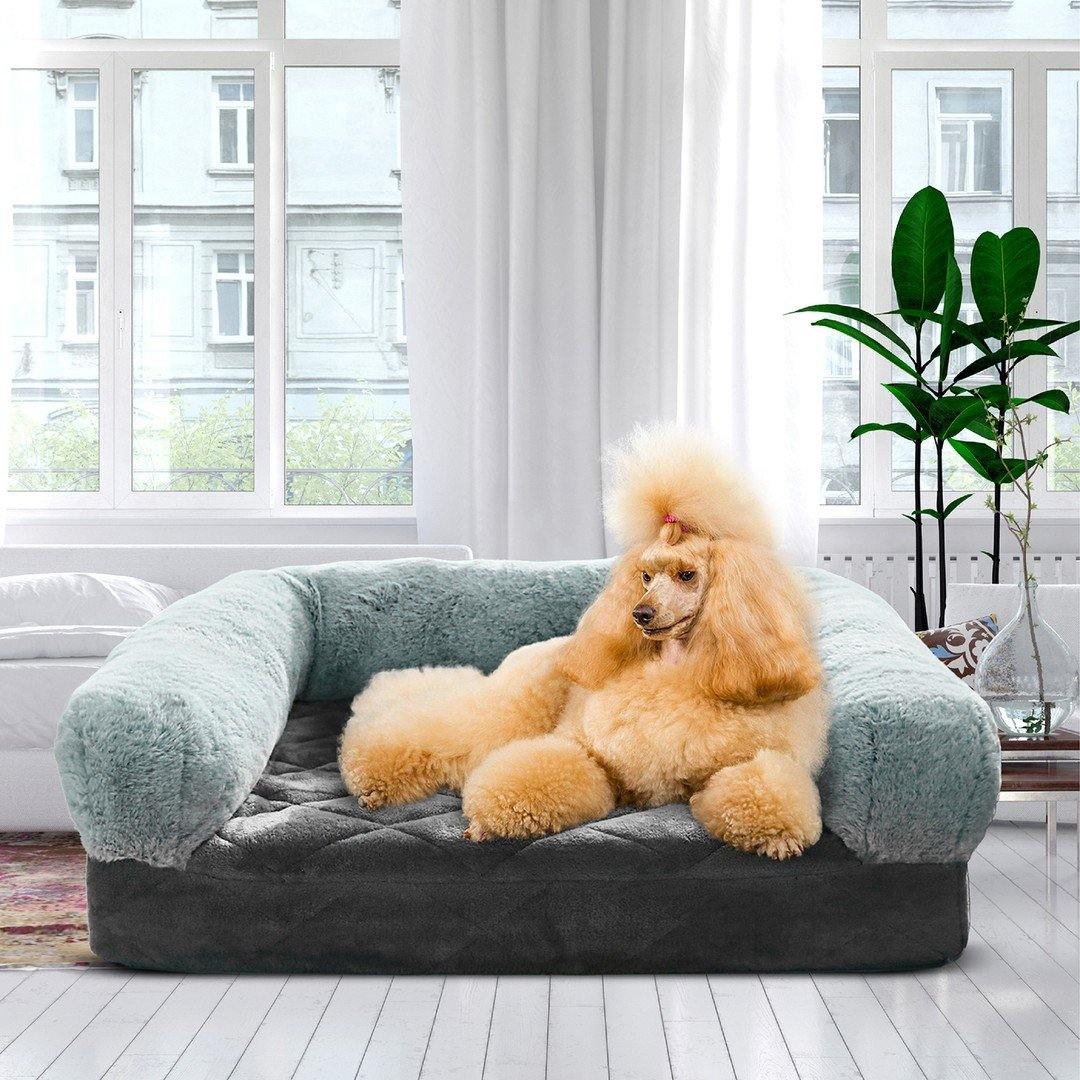
Memory foam is a type of foam that uses body heat to soften and conform it to your pet's shape. This provides remarkable support and comfort. When the pressure is removed, it will bounce back very slowly, and over time, it will remember your pet's body and optimal sleeping position, thus the term 'memory.'
History
NASA first designed memory foam in the mid-1960s. It is developed to counteract the extreme pressure astronauts faced when entering and exiting the earth's atmosphere. It was introduced to the public in 1991, and people liked it so much that today it isn't not only seen in mattresses, but in seat cushions, pillows, and even pet beds.
Pros
- The main reason memory foam is perfect for your pet is that it conforms to their body and reduce pressure in the spine, which means they get the best rest possible.
- Memory foam pet beds response to heat and pressure to minimize pressure point problems. This means that your pet's spine, neck, and hips are realigned, evenly distributing body weight, and eventually correcting poor sleeping posture.
- Memory foam pet beds are made from materials to promote good health; these are dust, hypoallergenic, and mite resistant - great for pets with respiratory problems or those with allergies.
- There is very little maintenance needed for this kind of foam. You don't need to turn or flip them, and it won't sag. Most good quality memory foam also comes with generous warranty anything between one to five years.
Memory foam beds are an excellent choice for elderly dogs with back and joint problems. But it is also great for younger pets as they can benefit from the cushioning it provides. After all, they sleep for 14 hours a day; therefore, providing them with a supportive and comfortable place to rest will make them healthier and happier pets.
Cons
- These mattresses can go soft in hot climates, and in cold temperatures, these can go hard. However, since our homes have central cooling systems, the bed can never go too soft or too hard.
- If the mattress is not appropriately aired, it can cause a foul odor coming out of the bed. Make sure that the memory foam is adequately ventilated.
- Some memory foams may be too soft and do not offer enough support to your pet. This could be a type of low-quality memory foam mattress. That is why it is essential to buy memory foam beds from trusted suppliers.
Are memory foam beds toxic to pets?
Memory foam beds are essentially made of polyurethane with added chemicals to give it enough viscosity and elasticity properties. But the chemicals it contains are non-toxic to pets, especially at low levels. The problem with memory foam beds rampant in the market is that most of them are made of low-quality materials and skimp on quality control. Low-quality memory foam beds contain many harmful chemicals that can harm your pet in the long run. Make sure to buy high-quality memory beds from trusted sellers.
